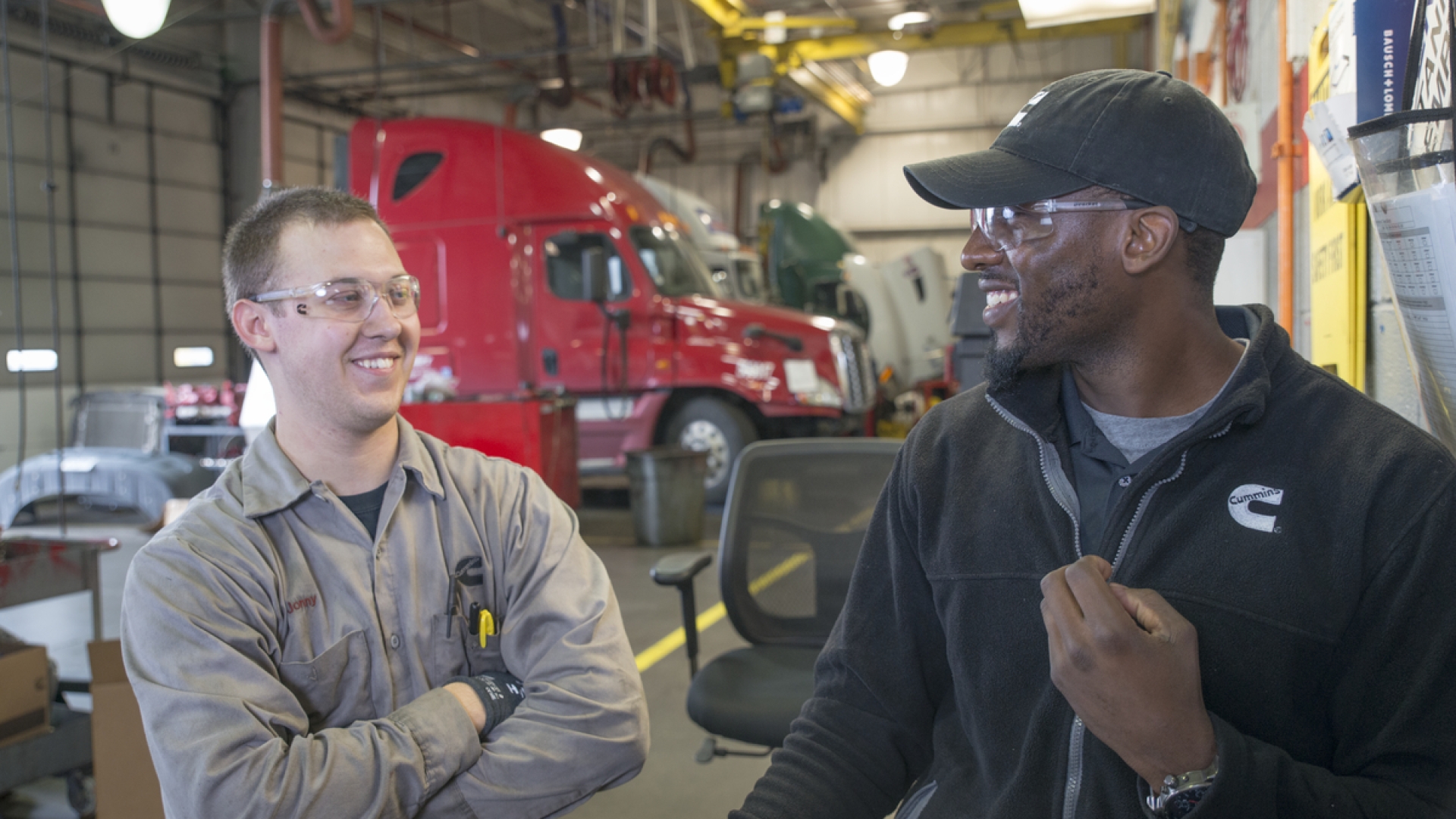Collaboration key for converting shops for alt fuel truck service
By Tom Quimby, On-highway Journalist

As more truck engines using alternative fuel enter the market, including the Cummins X15N, more repair shops are weighing their options for providing indoor service in a properly outfitted facility.
There is good news for technicians who often work outdoors to be code compliant for gaseous truck service.
Getting techs indoors means deciding between converting an entire garage to meet codes or upgrading one or two bays.
Service experts at Cummins help businesses in deciding what is best for their needs. Depending on the site and market, bay conversion may be the best option according to Mike Haub, Cummins Powertrain Service Engineering Director. He describes bay conversion as the fastest and most cost-effective path to indoor code compliance.
“The strategy we use at times is to focus on bays, not full facilities,” Haub said.
The price to convert an entire garage to meet codes for servicing natural gas, hydrogen and all-electric trucks can add up quickly and it may not be necessary.
“If you find out that all your lights have to be changed because of the style of light they are, that gets expensive versus just slight modifications on a bay or two and focusing on that versus a whole facility,” Haub said.
To convert an indoor space, walls are constructed to enclose a designated area within the larger facility. This localized enclosure allows code-compliant gas detectors, ventilation, heating and lighting systems to be installed only in that specific bay instead of throughout the entire shop. By limiting modifications to one section, shops can meet building code requirements more efficiently and often saving both time and costs.
According to Haub, it is important to first seek feedback and advice from service experts along with local code enforcement officials.
Collaborating early in the process can help prevent unexpected setbacks. In some cases, particularly when modifying an entire facility for natural gas service, shops may find they need to make additional updates beyond their original plans. Haub explained that some facilities have encountered situations where a planned modification revealed other areas of the building that were out of code and also required updates.
Early conversations with experts can also help shop management prepare for future compliance needs when additional alternative fuels are incorporated in the industry such as hydrogen.
“The gas detection space is important because when you think about the system you’re putting in, if you expect to work on hydrogen (the next alternative fuel gaining traction), choosing your system wisely now can make future upgrades less costly.” Haub advised.
Given decades of work in natural gas, Cummins experts have truckloads of expertise on code requirements and shop conversions. Haub suggests it is vital to get feedback from local stakeholders, too.
“You really cannot put a strategy together without deep collaboration and that is because there is no national standard. It is all local standards even down to municipality standards, not even state,” he said.
When it is best to convert the entire garage
Not all shops are ideal candidates for bay conversions including the Cummins Sales and Service location in Tulsa, Oklahoma.
General Manager Jake Linnabery explained that after talking early on with service support experts at Cummins, converting the entire facility proved to be the better option given the volume of natural gas trucks they service.
“As much of a market as we have here in Tulsa, the powers that be agreed that it was better to go ahead and do our whole facility,” Linnabery explained.
The upgrade provided compliance beyond natural gas for the award-winning shop.
“We have 11 working bays for compressed natural gas (CNG) and hydrogen. We're also BEV compliant,” Linnabery said.
Periodic meetings and lunches between shop leaders and contractors helped ease the transition as the shop continued servicing customers’ trucks while undergoing the conversion.
“The company that did it was great,” Linnabery said. “All the contractors were really good. We worked well with them hand in hand.”
Since Linnabery had already upgraded the lights to LEDs that was one less step that had to be tackled to meet code.
The result proved impressive and surpassed everyone’s expectations. It also made for a safer and more comfortable work environment, according to Linnabery.
“There's a lot more that came with that upgrade versus just having a CNG compliant facility. The whole facility is a lot safer,” Linnabery said. “It has all these sensors that detect carbon monoxide, NOx and fires. It’s really good.”
Automatic rollup doors separate the garage from other areas that have not been upgraded for alt fuel trucks like the unit room, dyno and parts warehouse.
“The doors are used to keep the gases enclosed in case there is a leak, since those areas are not covered by sensors or ventilation systems,” Linnabery said.
While some conversions have resulted in heating and cooling issues that was not an issue for Cummins Tulsa location.
“The air's constantly turning over in these CNG compliant facilities and sometimes you lose your heating in the winter but that wasn't the case,” said Linnabery who credits a heater in the system’s air exchanger.
“There's actually better heat in our facility now so I'd say it’s all been a plus, plus, plus. Everything has worked out way better than we thought.”
Author Profiles

Tom Quimby, On-highway Journalist
Tom Quimby, On-highway Journalist, has a broad range of experience covering various topics for local and national periodicals. His stories and photos have appeared in The Washington Times and more recently in Commercial Carrier Journal, Overdrive, Hard Working Trucks, Equipment World and Total Landscape Care. Tom has reported on Class 1 – 8 commercial vehicles since 2015. A graduate of the University of Southern California, Tom enjoyed growing up around hot rods, dirt bikes, deserts and beaches near San Diego. He now calls Northwest Florida home.
Related Topics
Related Tags